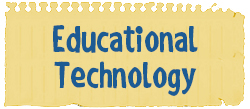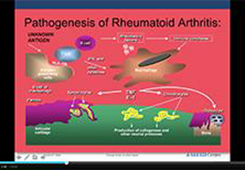Is the Classroom Lecture Becoming Extinct or Simply Evolving?

In an effort to improve learning and create a more inclusive environment in a large lecture chemistry course, Professor Cathy Drennan from MIT shared with members of the Tufts Large Lecture Consortium how three simple “selective pressures” made a difference for her students. In an attempt to highlight connections across disciplines and get students excited about chemistry, she experimented with how some subtle and inexpensive changes would help achieve that goal.
First, she highlighted four significant disadvantages of the large lecture introductory course:
- It can be a passive means of conveying material and it is hard to intellectually engage students.
- The lecturer doesn’t know if students are getting it, and students don’t know if they are the only ones confused.
- One lecture doesn’t fit all. For many students, it’s important to see the relevance of the material to other disciplines.
- It suggests that the lecturer is what every scholar in the field looks like.
(In this particular course, 33% of the students were under-represented minorities, 595 were biology related majors, and 29% were pre-med. The challenge for her was to evolve the course in a direction that would increase engagement and the motivation to learn chemistry for non-majors and potential majors.)
She and her team implemented three simple interventions or “selective pressures” they thoughts might address some of these disadvantages, and collected data on their impact. To find out what happened, visit the Teaching@Tufts (link sends e-mail) website.
Her surveys of students and student evaluations show that the three selective pressures had significant impact on attendance, engagement, course ratings, interest, and understanding of the importance of chemistry in biology.
Selective Pressure 1: The use of educational technology, specifically clickers.

Poll Everywhere is an easy-to-use classroom response system provided for free to Tufts faculty and students, in which mobile devices can function as “clickers”. Learn more . . .
What was the goal: To increase conceptual learning
What did she do?
- She used competition between recitation sections, and the winner got snacks at next recitation.
- The competition led up to playoffs at the end of the semester, and the winning section got t-shirts designed by students in the class.
- Anyone who responded in class to clicker questions got an attendance point.
- To compensate for potential deflation from losing, sections that did the most extra credit also got into the playoffs.
What was the impact?
- A lot of the biggest gains were for women, perhaps because of the community component.
- Additional study groups emerged from the recitations.
- Engagement increased, students from recitations began to sit together in the lecture hall.
Selective Pressure 2: Use of in-class examples and problems that span disciplines
What was the goal? To engage non-majors
What was the “selective pressure”?
- She used examples from biology often (many of the problems and examples are on Med Ed Portal and on her website.)
What was the impact?
- An increased interest in chemistry as reported by students
- An increase in mastery of chemistry concepts over previous years
- About a 10% increase in learning as measured by exams
Selective Pressure 3: Use of short videos
What was the goal? To show the relevance of the material in order to engage and motivate students (the WHAT of chemistry) and provide different views of who are chemists (the WHO of chemistry)
This choice was based in the literature on URM’s and women that seeing themselves in the discipline influences their engagement and persistence. The teaching and learning literature also demonstrates that connection to the real world and relevance to the learner impact learning.
What was the “selective pressure”?
- She created two sets of videos, only two to three minutes long each.
- The first set is 12 short videos of undergraduate students, graduate students, and recent graduates talking about their research and the relevance of the chemistry being taught in that section to their work and to the world.
- The second of 12 videos is each of these same people talking about how they ended up in chemistry, and their challenges along the way. (Only one knew she wanted to be a chemist from a young age.
- She showed these in class throughout the semester at the point in time that the research in the video was the topic of the class.
- These videos are all available on her website.
What was the impact?
- Greater on women than on men
- Increased excitement about the field
In the TA training, she exposes the TA’s to stereotype threat, the imposter syndrome, and social science literature in order to improve the environment for learning and group discussion.




